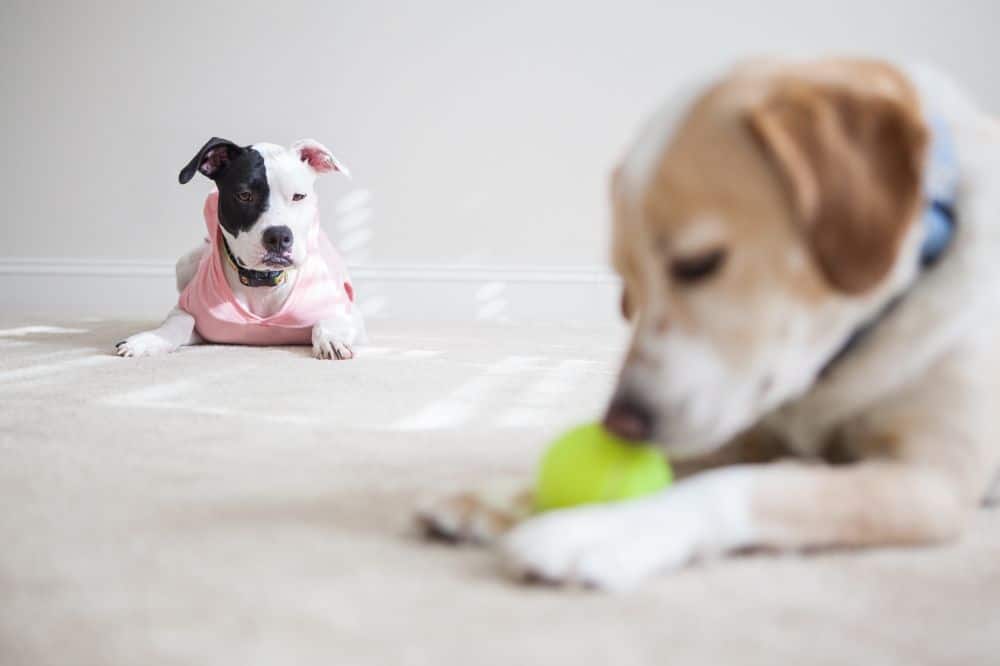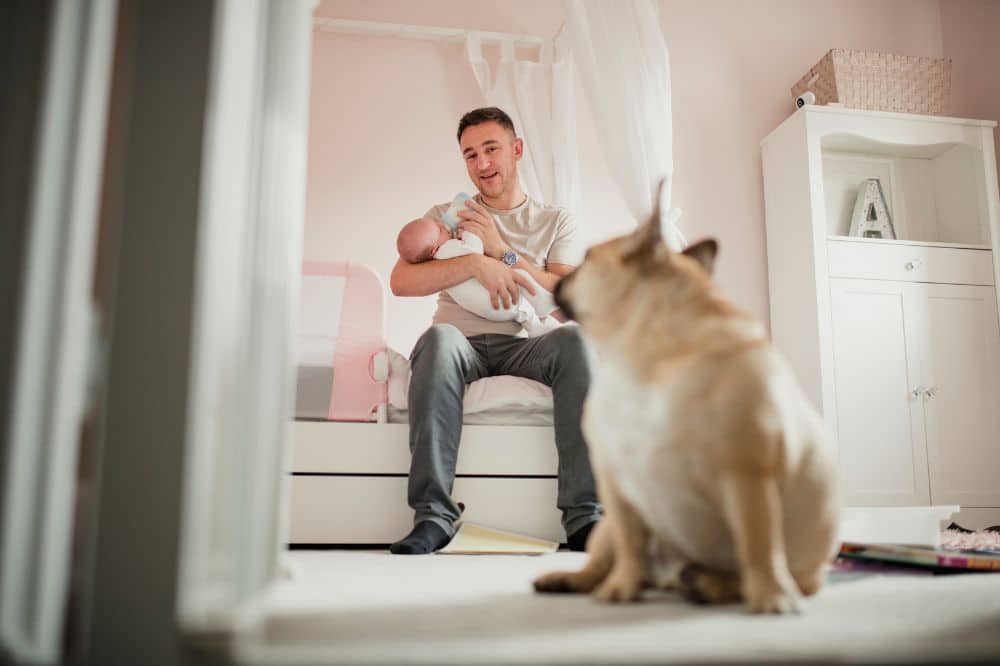Your pet is a cherished family member, and much like humans, they experience a wide range of emotions. If you have been a pet owner for any amount of time, you know that pet jealousy can rear its ugly head. Whether it’s directed towards another family member or a fellow furry friend, recognizing and managing pet jealousy is essential for maintaining harmony in your household.
What is Pet Jealousy?
Pet jealousy, in essence, mirrors the human emotion of jealousy. It happens when your pet feels threatened or insecure due to a perceived loss of attention, affection, or resources. Dogs are highly social animals, and changes in their environment can trigger feelings of jealousy, leading to various behaviors that may seem unusual.
Causes of Pet Jealousy
Several factors can contribute to pet jealousy, including introducing a new family member, whether human or furry, changes in routine, or unequal distribution of attention. Identifying the cause of your pet’s jealousy is the first step in effectively managing and mitigating the issue.

Recognizing Signs of Pet Jealousy
Signs of pet jealousy can manifest in different ways, such as excessive barking, whining, aggression, attention-seeking behaviors, or even withdrawal. Understanding the signs of jealousy in your pet is crucial for maintaining a harmonious household. Let’s dive into some common signs that your furry friend might be slightly jealous.
Attention Overdrive
Does your pet suddenly become a demanding diva, seeking your attention at every turn? If your once-independent cat or easygoing dog is now glued to your side, jealousy might be the culprit. Jealous pets often crave extra cuddles and affection to reassure themselves of their special place in your heart.
Fur-Fueled Side-Eye
Ever catch your pet shooting a side-eye at the new kitten or the neighbor’s dog? That subtle glare might be a sign of jealousy. Pets are experts at non-verbal communication, and a sideways glance can convey a multitude of emotions, including a touch of envy.
Paw-sessive Behavior
Jealousy can make your pet a bit possessive. If your dog guards their toys, food, or even your lap with newfound intensity, it could be a clear indication of jealousy. This territorial behavior stems from a fear of losing what they cherish.
Silent Treatment
Cats, in particular, are notorious for giving the cold shoulder when they feel a tad envious. If your feline friend suddenly becomes aloof or ignores your attempts at interaction, it might be their way of expressing jealousy over a recent addition to the household.
Vocal Protests
Jealousy isn’t always subtle. Some pets prefer to voice their discontent loudly. If your normally quiet pet starts barking, meowing, or chirping more than usual, they could be using their vocal prowess to grab your attention and express their jealousy.
Mischievous Mischief
Has your pet’s mischievous side suddenly taken center stage? Jealousy can manifest in destructive behavior as a desperate cry for attention. If you find chewed-up shoes or shredded pillows, consider it a red flag that your pet might be feeling a bit left out.
Disrupted Eating Habits
Changes in eating habits can be a significant sign of emotional distress in pets. If your normally hearty eater becomes disinterested in meals or starts playing with their food, it could be a response to jealousy over a new pet or family member.
Avoidance Tactics
Jealous pets may resort to avoidance as a coping mechanism. If your pet actively avoids interactions with the subject of their jealousy, be it another pet or a person, they’re likely trying to shield themselves from emotional discomfort.
Sleepy Sulkiness
A normally active and playful pet suddenly becoming lethargic might be displaying signs of jealousy. The emotional toll can take a physical toll, leading to a subdued demeanor and increased sleep as your pet copes with their feelings.

Methods to Curb Jealous Behaviors
Addressing pet jealousy requires patience, understanding, and positive reinforcement. Redirecting attention, maintaining consistent routines, and ensuring fair and equal treatment are essential strategies. Providing each pet with individualized attention, training, and love can help alleviate feelings of jealousy and foster a more harmonious environment.
- Balanced Affection: Ensure you distribute your love and attention evenly among all your pets. This helps prevent feelings of neglect and reinforces that there’s enough love to go around.
- Individual Quality Time: While group playtime is essential, individual attention is equally crucial. Spend one-on-one time with each pet, engaging in activities they enjoy. This fosters a sense of exclusivity and minimizes jealousy.
- Routine Consistency: Pets thrive on routine, and disruptions can trigger jealousy. Try to maintain consistent feeding, play, and cuddle times. Predictability provides a sense of security, reducing anxiety and jealousy.
- Introduce Changes Gradually: When introducing a new pet or family member, do so gradually. Allow your existing pets to acclimate to the changes at their own pace, reducing the likelihood of jealousy.
- Provide Separate Spaces: Pets value their personal space. Ensure each pet has their own designated area for eating, sleeping, and playing. This helps minimize territorial disputes and jealousy over shared resources.
- Positive Reinforcement: Reward good behavior and positive interactions with treats, praise, or affection. Reinforcing positive behaviors helps redirect attention away from negative emotions like jealousy.
- Environmental Enrichment: Keep your pets mentally stimulated with toys, puzzles, and activities. Boredom can contribute to jealousy, so providing mental and physical stimulation is vital for a happy pet.
- Consult with a Professional: If jealousy leads to aggressive or destructive behavior, consider seeking advice from a professional animal behaviorist. They can provide tailored strategies to address specific issues and create a harmonious living environment.
- Stay Calm and Consistent: Your pets pick up on your emotions, so maintaining a calm demeanor is essential. Consistency in your responses to jealousy-related behaviors helps your pets understand boundaries and expectations.

Wrapping Up
Just like humans, our canine companions experience a range of emotions, and jealousy is no exception. Recognizing and managing pet jealousy involves understanding the unique triggers and behaviors displayed by your furry friend. You can help your pet feel secure and content by fostering a supportive and loving environment. At Latchkey Pets, we understand the importance of maintaining your pet’s well-being. Consider our daytime dog walking and pet sitting services to ensure your dog receives the extra attention and care they need, even when you’re away. Contact us today to schedule a personalized care plan for your beloved pets.
